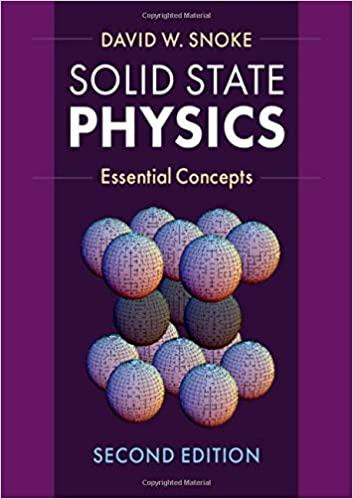In a cubic crystal, a triply degenerate band with p-symmetry has the following deformation Hamiltonian, known as
Question:
In a cubic crystal, a triply degenerate band with p-symmetry has the following deformation Hamiltonian, known as the Pikus–Bir Hamiltonian (derived in Section 6.11.2):
operating on the basis of the three degenerate states |px〉, |py〉, and |pz〉. The constant a is a hydrostatic deformation potential, while b and d are shear deformation potentials.
(a) Show that for a uniaxial strain along the [001] direction, the hydrostatic shift is 3aε, where ε = 1/3 (εxx +εyy + εzz) is the hydrostatic strain, and the splitting of the states is equal to |3bτ |, where τ = ( 1/2 εxx + 1/2εyy − εzz). For a uniaxial strain along the [111] direction, show that the splitting of the states is equal to |3dτ|, where τ is the shear strain in this direction.
(b) Construct the shear deformation operator D̃ for the Pikus–Bir Hamiltonian above explicitly for the transverse phonon case![]()
and show that the Hamiltonian in this case gives a nonzero electron–phonon interaction energy. Do the same for the transverse phonon along [110],![]()
Show that this shear term also gives a nonzero contribution for longitudinal phonons.
Step by Step Answer:






